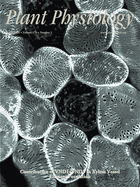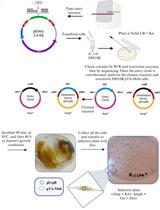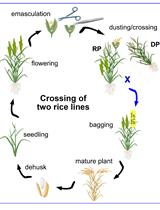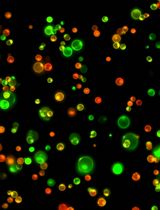- EN - English
- CN - 中文
High-throughput Screening for Defense Priming-inducing Compounds in Parsley Cell Cultures
欧芹细胞防御引物诱导化合物的高通量筛选
(*contributed equally to this work) 发布: 2021年10月20日第11卷第20期 DOI: 10.21769/BioProtoc.4200 浏览次数: 2406
评审: Nicolás M. CecchiniEugenio LlorensShweta PanchalAnonymous reviewer(s)
Abstract
Defense priming describes the enhanced potency of cells to activate defense responses. Priming accompanies local and systemic immune responses and can be triggered by microbial infection or upon treatment with certain chemicals. Thus, chemically activating defense priming is promising for biomedicine and agriculture. However, test systems for spotting priming-inducing chemicals are rare. Here, we describe a high-throughput screen for compounds that prime microbial pattern-spurred secretion of antimicrobial furanocoumarins in parsley culture cells. For the best possible throughput, we perform the assay with 1-ml aliquots of cell culture in 24-well microtiter plates. The advantages of the non-invasive test over competitive assays are its simplicity, remarkable reliability, and high sensitivity, which is based on furanocoumarin fluorescence in UV light.
Keywords: Agrochemicals (农药)Background
The pressing global issue of food insecurity due to population growth, diminishing arable land, and climate change can only be addressed in agriculture by effective crop protection (UN Food and Agriculture Organization, 2009). Synthetic agrochemicals can effectively protect crops from disease but also raise ecological and health concerns (Lamberth et al., 2013; Mascarelli, 2013). Therefore, safe and eco-friendly disease control products are needed (Lamberth et al., 2013).
Chemicals that prime the plant immune system for enhanced defense are promising for sustainable crop protection (Beckers and Conrath, 2007; Conrath et al., 2015). When primed, plants respond to very low pathogen stimuli with more robust activation of defense than unprimed plants. This frequently reduces disease susceptibility of the primed plant and lowers the risk of pathogen adaptation (Conrath et al., 2002, 2006, and 2015; Beckers and Conrath, 2007; Frost et al., 2008). Thus, inducing priming by harmless chemicals represents a promising means for sustainable crop disease control. Previous work with several chemical compounds provided proof of this concept (summarized in Conrath et al., 2015). However, the economic success of these compounds was limited, mainly because farmers preferred the strong curative performance of standard pesticides.
Today, the commercial success of crop protectants often relies on their ability to combine antimicrobial activity with defense priming in the target crop (Beckers and Conrath, 2007; Conrath et al., 2015). However, straightforward test systems for identifying priming-inducing chemistry are rare. Here, we describe a high-throughput screen for identifying chemical compounds that prime microbial pattern-induced furanocoumarin (phytoalexin) secretion in suspension-cultured parsley (Petroselinum crispum) cells. The test measures the enhancement by priming-activating chemicals of furanocoumarin secretion provoked in parsley culture cells by a moderate concentration of Pep13 (Kauss et al., 1992), a molecular pattern peptide in the plant pathogen Phytophthora sojae (Brunner et al., 2002). Over the past 25 years, the test helped to identify novel priming-inducing chemistry (Katz et al., 1998; Siegrist et al., 1998; Schillheim et al., 2018). For higher throughput, we now perform the test with 1-mL aliquots of cell culture in 24-well microtiter plates (Schillheim et al., 2018). Other advantages of the test over competitive assays are the extraordinary reliability, simplicity, high sensitivity of fluorescence detection, and the need for only two simple treatments (activation of priming and Pep13 challenge) before final analysis. In principle, the assay should be feasible also with cell cultures of other plant species that synthesize furanocoumarins (e.g., giant hogweed, common hogweed, and garden angelica), provided they respond to treatment with a given molecular pattern with furanocoumarin secretion to the culture medium. If that is not the case, other test readouts need to be chosen [e.g., the production of reactive oxygen species, as described byKauss et al. (1994)]. A recently introduced competitive assay to the screen introduced here evaluates the enhancement of Pseudomonas syringae pv. tomato avrRpm1-induced cell death in an Arabidopsis cell culture by priming agents (Noutoshi et al., 2012). The identification of several immune-priming compounds verified the power of the assay for discovering priming-inducing chemistry. However, because of the requirement of bacterial challenge, cytochemical staining, washing, dye extraction, and absorbance measurement, the screen is highly elaborate. The same holds true for a more recent respiratory activity-monitoring system for discovering immune-priming chemistry (Schilling et al., 2015), which is highly innovative but suffers from low throughput.
Materials and Reagents
Sealing film (Roth, catalog number: H666.1)
Sealing foil for cell cultures (Roth, catalog number: EN85.1)
Serological pipettes 10 ml (Sarstedt, catalog number: 86.1254.025)
Serological pipettes 10 ml without tip (Sarstedt, catalog number: 86.1688.010)
Suction bottle 1,000 ml (Roth, catalog number: NY68.1)
Syringe filters, 0.22 µm (Roth, catalog number: KH54.1)
Aluminum foil (Roth, catalog number: 2596.1)
Büchner funnel, 70 ml (Roth, catalog number: XX45.1)
Cell culture 24-multiwell plates (Greiner, catalog number: 662160)
Cellulose plugs “Zellstoppers” (Diagonal, catalog number: ZE153)
Circular filter papers, Type 113A, 55 mm (Roth, catalog number: AP74.1)
Disposable syringe 20 ml with Luer-Lock fitting (Roth, catalog number: T550.1)
Flasks, 250 ml with a baffle (Diagonal, catalog number: 2121636S1)
Flasks, 500 ml with a baffle (Diagonal, catalog number: 2121644S1)
Sealing gaskets (Roth, catalog numbers: 9757.1 [33 mm]; 9758.1 [41 mm])
NuncTM MicroWellTM 96-well, Nunclon Delta-Treated, flat-bottom microplate (ThermoFisher Scientific, catalog number: 137101)
Pasteur pipettes, 2 ml (Roth, catalog number: 4522.1)
Pep13 peptide (Thermo Fisher Scientific, amino acid sequence: VWNQPVRGFKVYE)
Petri dishes, 94/16 mm (Greiner, catalog number: 633180)
Pipette tips Gilson (Greiner, catalog numbers: 740290 [1,000 µl]; 739290 [200 µl])
Pipette tips Starlab (TipOne®, catalog number: 1110-3000 [10/20 µl])
Reaction tubes 1.5 ml (Sarstedt, catalog number: 72706)
Reaction tubes 50 ml (Greiner, catalog number: 227261)
Petroselinum crispum PC794 callus culture (DSMZ - Leibniz Institute, catalog number: PC794)
Plant agar (Duchefa, catalog number: P1001.1000)
Potassium hydroxide, 1 M KOH (Roth, catalog number: 9522.1)
Salicylic acid, C7H6O3 (TCI, catalog number: H1342)
Test compounds
Gamborg’s B5 medium including vitamins (Duchefa, catalog number: G0210.0050)
D-Sucrose, C12H22O11 (Roth, catalog number: 4621.2)
Hand sanitizer (Roth, catalog number: EH72.2)
Magnesium sulfate heptahydrate, MgSO4·7H2O (Roth, catalog number: P027.1)
2,4-Dichlorophenoxyacetic acid, C8H6Cl2O3 (Merck, catalog number: 8204510005)
Dimethyl sulfoxide, C2H6OS (Roth, catalog number: A994.1)
Ethanol, C2H5OH, ≥99.5 %, extra pure (Roth, catalog number: 5054.4)
70% ethanol (see Recipes)
2,4-Dichlorophenoxyacetic acid, 0.2 mg/ml stock solution (see Recipes)
Magnesium sulfate, 0.05 mg/ml stock solution (see Recipes)
Modified Gamborg’s B5 Medium (see Recipes)
Salicylic acid in water (SA in water), 10 mM stock solution (see Recipes, store aliquots at -20°C)
Salicylic acid in DMSO (SA in DMSO), 80 mM stock solution (see Recipes, store aliquots at -20°C)
Pep13, 0.005 µM stock solution (see Recipes, store aliquots at -20°C)
Callus medium (see Recipes)
Equipment
10-µl, 100-µl and 1,000-µl micropipettes (ErgoOne, Starlab)
Magnetic bars (Roth, catalog number: 2153.2)
Scalpel (Roth, catalog number: X003.1)
Scissors (Roth, catalog number: 5489.1)
Measuring cylinder, 1,000 ml (Roth, catalog number: P153.1)
Measuring cylinder, 100 ml (Roth, catalog number: P150.1)
Analytical balance (Mettler Toledo, model: MS204)
Autoclave (Systec, model: DX65)
Darkroom, temperature controlled (25°C), with two shaker incubators and clean bench with gas burner (see below)
Clean bench (IBS Tecomara, model: NU-543-4000EC)
Large shaker incubator, 90 rpm, 25°C (Infors HT, model: Multitron Standard)
Safety laboratory gas burner (Roth, catalog number: AN82.1) with propane gas bottle (Westphalengas; 11 kg)
Small shaker incubator, 130 rpm, 25°C (Infors HT, model: Ecotron)
Laboratory vacuum system (Fisher Scientific, model: Welch IlmvacTM LVS 210T, catalog number: 11882253)
Magnetic stirrer (Roth, catalog number: AAN2.1)
Microplate Reader (BMG Labtech, model: CLARIOstar Plus)
pH meter (Mettler Toledo, model: SevenMultiTM)
Pipette bulb (Roth, catalog number: YX53.1)
Pipette controller (BRAND, model: accu-jet® pro)
Ultrapure water system (Satorius, model: arium® pro VF)
UV lamp (Thermo Fisher Scientific, catalog number: 12813029)
Software
CLARIOstar Reader Control Software (obtained with microplate reader)
Plate: NUNC96
Excitation: 335 nm (Bandwidth: 20)
Dichroic filter: 365.2
Emission: 398 nm (Bandwidth: 20)
MARS Data Analysis Software (obtained with microplate reader)
Statistical software (e.g., GraphPad Prism)
Procedure
文章信息
版权信息
© 2021 The Authors; exclusive licensee Bio-protocol LLC.
如何引用
Readers should cite both the Bio-protocol article and the original research article where this protocol was used:
- Schmitz, K., Werner, L. and Conrath, U. (2021). High-throughput Screening for Defense Priming-inducing Compounds in Parsley Cell Cultures. Bio-protocol 11(20): e4200. DOI: 10.21769/BioProtoc.4200.
- Schillheim, B., Jansen, I., Baum, S., Beesley, A., Bolm, C. and Conrath, U. (2018). Sulforaphane Modifies Histone H3, Unpacks Chromatin, and Primes Defense. Plant Physiol 176(3): 2395-2405.
分类
植物科学 > 植物生理学 > 生物胁迫
植物科学 > 植物细胞生物学
生物科学 > 生物技术
您对这篇实验方法有问题吗?
在此处发布您的问题,我们将邀请本文作者来回答。同时,我们会将您的问题发布到Bio-protocol Exchange,以便寻求社区成员的帮助。
提问指南
+ 问题描述
写下详细的问题描述,包括所有有助于他人回答您问题的信息(例如实验过程、条件和相关图像等)。
Share
Bluesky
X
Copy link












